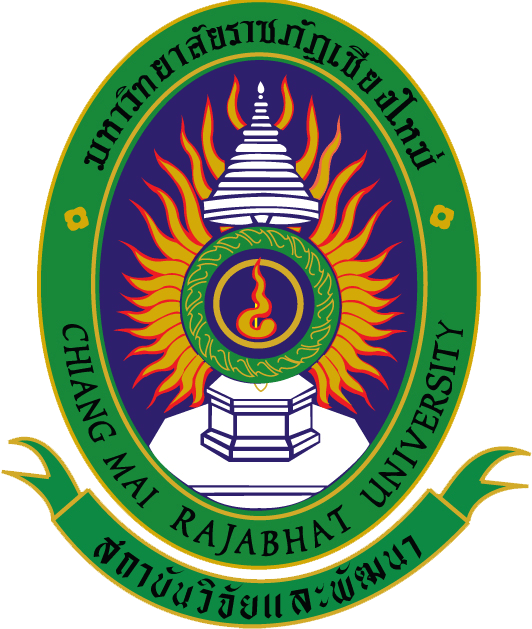
ระบบสารสนเทศงานวิจัย สถาบันวิจัยและพัฒนา มหาวิทยาลัยราชภัฏเชียงใหม่
Research Information System(RIS)
การตอบสนองของพันธุ์ข้าวสาลีต่อการให้ธาตุโบรอนในลักษณะผลผลิตและคุณภาพภายใต้ความเครียดจากความร้อน
อาจารย์ ดร.สุพรรณิการ์ กล่อมจอหอ
คณะเทคโนโลยีการเกษตร
คำสำคัญ :
เลขทะเบียน :
1753-66-AGRI-CMRU
บทคัดย่อ
โครงการวิจัย “การตอบสนองของพันธุ์ข้าวสาลีต่อการให้ธาตุโบรอนในลักษณะผลผลิตและคุณภาพภายใต้ความเครียดจากความร้อน” มีวัตถุประสงค์เพื่อศึกษาการตอบสนองของพันธุ์ข้าวสาลีต่อการให้ธาตุโบรอนในลักษณะผลผลิตและคุณภาพภายใต้วันปลูกที่ล่าช้า วางแผนการทดลองแบบสองปัจจัยสุ่มในบล็อกสมบูรณ์ (Factorial in Randomized Complete Block Design) มี 3 ซ้ำ (Block) ปัจจัย ได้แก่ ระดับโบรอน 3 ระดับ (ให้ในรูป H3BO3 (Borax)) ได้แก่ 1) ไม่ใส่โบรอน 2) ใส่โบรอน 1 กิโลกรัมต่อไร่ 3) ใส่โบรอน 1.5 กิโลกรัมต่อไร่ และพันธุ์ข้าวสาลี 3 พันธุ์ ได้แก่ พันธุ์ฝาง 60 พันธุ์สะเมิง 1 และพันธุ์คามุต ปลูกข้าวสาลีวันที่ 11 มกราคม 2566 บันทึกข้อมูลการเจริญเติบโต และผลผลิตและองค์ประกอบผลผลิต ทุก 2 สัปดาห์
อุณหภูมิอากาศเฉลี่ยตลอดฤดูกาลเพาะปลูกสูงขึ้นและมีค่าอยู่ระหว่าง 23.3-30.4 องศาเซลเซียส อายุเก็บเกี่ยวของข้าวสาลีสั้นลง โดยเฉลี่ย 65 วัน ผลการศึกษาพบว่าเมื่อให้โบรอนแตกต่างกันในข้าวสาลีสามพันธุ์และปลูกล่าช้าออกไป ไม่พบปฏิสัมพันธ์ร่วมระหว่างระดับโบรอนและพันธุ์ข้าวสาลีในทุกลักษณะการเจริญเติบโตและผลผลิตและองค์ประกอบผลผลิต นอกจากนี้จากการวิเคราะห์ปริมาณสารประกอบโพลีฟีนอลทั้งหมดในเมล็ดข้าวสาลีทั้งเมล็ด พบว่าปริมาณของข้าวสาลีทั้ง 3 พันธุ์ อยู่ระหว่าง 1.31-1.39 มิลลิกรัมต่อกรัมน้ำหนักแห้ง ข้อมูลการปลูกข้าวสาลีนี้ใช้เป็นแนวทางให้แก่เกษตรกร ในจัดการธาตุอาหารพืชเมื่อต้องให้ธาตุโบรอนแก่ข้าวสาลีเมื่อปลูกล่าช้า เพื่อให้สามารถรับมือได้เมื่อมีการปลูกข้าวสาลีในสภาพอากาศร้อนขึ้น
Abstract
The research project “Response of Wheat Genotypes to Boron Application on Productivity and Quality under Heat Stress” project aimed to study the response of wheat varieties to application of boron levels in yield and quality characteristics under delayed planting dates. The experiment was conducted in a factorial in randomized completed block design (RCBD). There were three blocks of replications, three levels of boron (given as H3BO3 (Borax)) 1) no boron application, 2) add 1 kg of H3BO3 per rai, 3) add 1.5 kg of H3BO3 per rai, and three wheat varieties, namely Fang 60, Samoeng 1 and Kamut. Wheat planting date was on January 11th, 2023. Growth yield and yield components data were recorded every two weeks.
The average air temperature throughout the growing season was higher and ranges from 23.3-30.4 degrees Celsius. The harvest growth stage of wheat is shortened, on average 65 days. According to the results, no interaction was observed between boron levels and wheat varieties in all growth characteristics and yield and yield components. In addition, by analyzing the total polyphenolic compound content in whole wheat grains, it was found that the content of all three wheat varieties is between 1.31-1.39 milligrams per gram of dry weight. This wheat growing information is used to guide farmers in managing plant nutrients when boron is given to wheat under delayed planting dates that affected by heat stress, so that they can cope when wheat is grown in a hotter climate.
ไฟล์งานวิจัย
FinalReport66 ข้าวสาลี โบรอน ความเครียดจากความร้อน_SupannikaKJ.pdf
5 04 เม.ย. 2566
กองทุนวิจัย มหาวิทยาลัยราชภัฏเชียงใหม่
202 ถ.ช้างเผือก ต.ช้างเผือก อ.เมือง จ.เชียงใหม่ 503000
053-88-5555